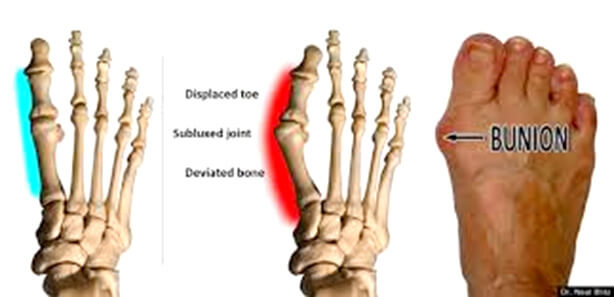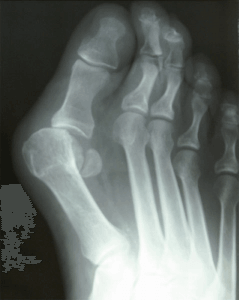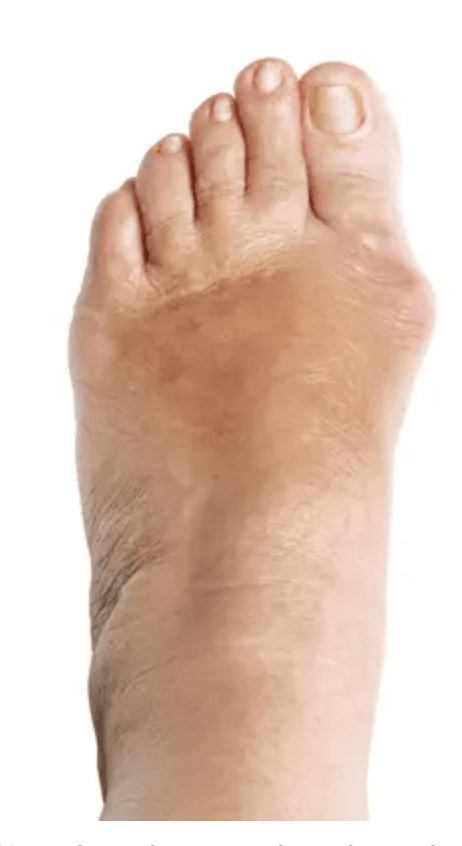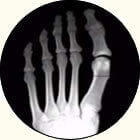bunion
Displaying items by tag: bunion
Dr. Brandon Nelson, A Board Certified Foot Physician & Surgeon, Issaquah’s Top Podiatrist, Discusses Why You Should Have Your Bunion Fixed

Bunions are one of the most common reasons people schedule an appointment with a foot and ankle surgeon. It is by far the most common surgical procedure I do. People of all ages and activity levels can have a bunion. The primary reason people schedule an appointment is difficulty fitting the shoes they would like to wear.
I think there are quite a few reasons to fix your bunions these days and I will discuss a few of the most beneficial reasons.
Bunions are an inherited foot disorder and are more common in women. They are usually the result of a foot that wants to flatten out too much or what we would call pronate. A bunion results when the first metatarsal tries to stabilize the medial arch. This results in the first metatarsal moving out of place and the bunion developing. Fixing a bunion can result in stabilization of the medial arch. This can have effects on the overall stability of the foot. I see patients that have had plantar fasciitis or other stability issues that resolve once the bunion is fixed.
2. Shoe Fit
Another big issue with bunions becomes an inability to fit in normal shoes. I see a lot of wide shoes and short extra depth shoes when people try to accommodate bunions and other toe deformities. It is often a relief to be able to have shoes fit again and get back to wearing the shoes you once enjoyed or liked after your toe is straightened.
3. Your Bunion Will Get Larger
Many people believe they can use straps or tape or toe straighteners and change their bunion. However, we know from long term data this is not true. There is no way to reverse your bunion without surgery. Everyone’s bunion with time and mileage will get bigger. I recommend having it fixed before it causes the 2nd toe to become a hammer toe or begins to cross over or under the 2nd toe.
If you have a bunion and want an evaluation schedule an appointment with me, or make an appointment online, I will help you.
Sincerely,
Board Certified Physician & Surgeon
Issaquah’s Top Podiatrist & Foot/Ankle Surgeon
Dr Brandon Nelson, A Board-Certified Physician & Surgeon Discusses Why You Should Have The Lapiplasty Bunionectomy Procedure

Bunions can make life difficult. They can get in the way of exercising and other activities that we enjoy. They can make shoe choices impossible and cause pain daily. This often leads to patients needing surgical intervention to remove the bunion. The Lapiplasty is revolutionizing bunion surgery and creating great outcomes for patients that need to have their bunion removed.
I encourage anybody that is deciding to have their bunion removed to see a surgeon that has experience with Lapiplasty. I have been operating on bunions for over 15 years and have seen the evolution of bunion surgery. I have seen minimally invasive surgery trends; I have seen open surgery trends and now over the last 5 years have seen Lapiplasty move to the forefront. Lapiplasty is different from other bunion surgeries in many ways.
The Lapiplasty addressed the root cause of a bunion. Bunions are created when we have an unstable foot and joint. The Lapiplasty works at the apex of the bunion deformity and at the same addresses the mechanical instability of the foot. It has proven to have great long term outcomes and will soon be the most common bunion surgery correction technique.
If you would like a consultation on your bunion I can help. Call to make an appointment with me at 425-391-8666 or contact us online.
Sincerely,
American College of Foot & Ankle Surgeons
Dr Brandon Nelson, A Board-Certified Physician & Surgeon Discusses The Austin Bunionectomy

Bunions are primarily an inherited foot structure issue. These often begin to develop in early adolescents and progressively get bigger as time goes on. They develop as one’s foot becomes increasingly unstable through the medial. The bunion itself seems to grow as the first metatarsal shifts outwards and the big toe begins to drift into the adjacent digits. This shift will continue until it is treated and will get larger as time and milage gets greater.
There are many different ideas about the treatment of a bunion. There are conservative and surgical options available. It is important to note that conservative options do not correct the bunion or stop it from getting larger. This can only be accomplished surgically.
Surgery for a bunion is most used for long term correction. Meaning realigning the bone for the foot to function in a stabilized fashion. Many bunion surgeries are what is called a head procedure. This is when the metatarsal head is cut and pinned or screwed in place. The procedure itself is straight forward and can usually be done in under an hour. The average person will be walking the entire post operative phase and can be in a normal shoe in 4-6 weeks typically.
If you have a bunion and are in pain, I can help. Make an appointment with me today at 425-391-8666 or submit a contact form online and our team will reach out as soon as possible.
Sincerely,
Dr Brandon Nelson
American College of Foot & Ankle Surgeons
Dr Timothy Young, a board certified foot surgeon talks about Reversing a Bunion: Understanding the Causes, Treatment Options, and Prevention

Dr Timothy Young, a board certified foot surgeon talks about Reversing a Bunion: Understanding the Causes, Treatment Options, and Prevention Part 1
Introduction:
Bunions are a common condition that can cause foot discomfort, pain, and limit mobility. Bunions are typically associated with a bony protrusion at the base of the big toe, and they are actually the result of a complex structural deformity in the foot. We will review the causes of bunions, explore the available treatment options, and discuss preventive measures that can help reverse this condition.
Understanding Bunions:
Bunions, are also known as hallux valgus. This condition occurs when the joint at the base of the big toe becomes misaligned. The misalignment causes the big toe to angle inward, towards the other toes, leading to the formation of a bony bump on the side of the foot. Bunions can be hereditary, but they are often aggravated by certain factors, including:
a. Footwear: Tight, pointed shoes that squeeze the toes together can contribute to the formation of bunions.
b. Foot structure: Certain foot types, such as very pronated flat feet with low arches, are more prone to develop bunions.
c. Arthritis: Certain forms of arthritis can increase the risk of developing bunions. And conversely, bunions can lead to abnormal joint wear with potential for arthritis.
Treatment Options:
While bunions are generally progressive and often worsen over time, there are several treatment options available to address the symptoms and reverse the condition:
Wearing good footwear: look for wide-toe shoes with a low heel and nice arch support can reduce discomfort.
Orthotic devices: prescription custom-made shoe inserts (orthotics) can help stabilize the foot and reduce further progression of the bunion.
Padding and taping: Using padding or taping around the bunion that will provide cushioning and reduce pain.
*If you are experiencing foot or ankle pain, give us a call at 425-391-8666 or make an appointment online today.
Dr Brandon Nelson, A Board-Certified Physician & Surgeon Discusses How the Lapiplasty Bunionectomy Works

A bunion is a common foot condition I see at my clinic. It is amazing the different sizes and shapes of bunions I have seen during my career. There are a couple of things I have noted during this time. One is that the bunion gets bigger. It does not grow but the bone continues to move out of alignment. Secondly it is easier to fix earlier in the process especially when the other toes are not involved. Lastly, the most important aspect is proper procedure selection. This leads me to my discussion today. The Lapiplasty has really revolutionized bunion surgery.
I was listening to a lecture today and they were discussing the fact that there are over 150 different types of bunion surgery. Most of these techniques are no longer utilized. But this is important because it illustrates how difficult it can be to get long term corrections. This is why I am a fan of the Lapiplasty procedure. The Lapiplasty corrects the bunion at its apex. It helps to realign the bone in all 3 cardinals planes that the body moves in. It has helped surgeons to provide the best correction for the patient and speed recovery. I find this procedure has incredible outcomes and my patients are happy with their results.
If you are suffering from a bunion I can help. I have seen how painful and debilitating these can be. Make an appointment online or give us a call at 425-391-8666
Sincerely,
American College of Foot & Ankle Surgeons
Dr Brandon Nelson, A Board Certified Physician & Surgeon, Discusses How to Fix Your Bunion

Bunions can be extremely painful. They can make everyday activities uncomfortable. These can be things like running or hiking or climbing or even just trying to wear shoes. The pain is often described as a dull ache or even a burning type sensation. Plenty of patients relate other things like trying to wear a shoe again after being in a sandal all summer or a sudden sharp pain on the bottom of their foot. The symptoms and problems associated with a bunion can be diverse and understanding the pathology can be helpful.
A bunion is not a growth on the side of the foot. Quite a few patients come into the office believing that they have a bony growth that is causing the bunion. However this is a common misconception. The bunion is caused by a change in position of the 1st metatarsal bone. This bone begins to deviate towards the other foot and as it changes position the big toe drifts towards your 5th digit or pinky toe. This deviation gets worse with time. There are factors that influence the bunion. Primarily it is genetics. Your bunion develops because one has a family history of bunions. There are factors that will increase the speed at which it occurs like high heel shoes for example. Eventually it becomes big enough or painful enough to have it fixed.
Fixing a bunion is my specialty. I really enjoy helping patients to get back to the activities they love. Bunion surgery can be relatively straightforward and provide excellent results. The vast majority of bunions can be fixed in 1-2 hours as an outpatient procedure. The surgical recovery depends on the procedure selected and the fixation utilized to repair the bunion. If you are suffering from bunion pain I can help! Give me a call at 425-391-8666 or make an appointment online today.
Sincerely,
American College of Foot & Ankle Surgeons
Dr Brandon Nelson, A Board Certified Physician & Surgeon, Discusses Finally Getting Your Bunion Fixed!

In the average week I see quite a few patients that are ready to finally have their bunion fixed. The large majority of patients I have seen for years and their bunions are becoming bigger and more painful. They are having a hard time fitting in shoes and going about daily activities. The decision to fix their bunion is an exciting one and today's repairs of a bunion are much easier than in the past.
Fixing your bunion is a big decision and it can be overwhelming sometimes. I really enjoy helping my patients through this process and eliminating the concern and apprehension around surgical correction. Surgery for bunions has really come a long way and new techniques have created an almost foolproof approach.
The newest technique that I am really excited about is the Lapiplasty. This is a great procedure that is reliable and has great long term results. The Lapiplasty is excellent for patients that even have large bunions. This procedure can be done in my office at our on-site surgery center. This can provide huge time and cost savings.
Do you have a bunion and have you always thought about fixing it? Give me a call and I can help. I look forward to fixing your bunion!!!! Give us a call at 425-391-8666 or make an appointment online today.
Sincerely,
Dr Brandon Nelson, A Board Certified Physician & Surgeon, Discuss the most Common Bunionectomy Surgery

Bunion surgery is one of the most common surgical procedures in the United States. It is usually performed in an outpatient setting and no overnight stay is required. The majority of bunion surgeries take less than 2 hours and have great long term outcomes. The most common bunion surgery is an Austin bunionectomy as it is called. It has been utilized for almost 100 years and is a powerful tool in bunion correction.
The Austin bunionectomy traditionally involved a cut in the 1st metatarsal head. It was cut from medial to lateral in a chevron type fashion. This allows for correction of the abnormally aligned joint and removal of the bunion. It usually involves some sort of fixation to hold the bone in place like a screw or a pin. Some surgeons require a period of non-weight bearing and typically 3 months before back to normal activities.`
I personally have performed this type of bunion surgery 1000’s of times. I like to make a longer arm with my but on the bottom of the bone as opposed to a chevron style cut. This allows for a more rigid fixation and faster recovery. The typical patient can return to activities at 6 weeks.
If you have a bunion that is causing pain and want to have minimal downtime give me a call and I can review all your options. Remember I have an onsite surgery center that saves thousands as compared to having your procedure at a hospital or ASC.
Sincerely,
Dr. Brandon Nelson, A Board Certified Physician and Surgeon, Discusses the American College of Foot and Ankle Surgeons Consensus on Bunions

Dr Brandon Nelson, A Board Certified Physician and Surgeon, Discusses the American College of Foot and Ankle Surgeons Consensus on Bunions
This month the American College of Foot and Ankle Surgeons released an updated version of statements regarding bunion deformities. It was released to look at the best available evidence, clinical practice, and clinical experience to treat bunions. As a member and Board-Certified Surgeon, I feel it is an essential tool to have in our clinical practice. I will summarize some of the important findings:
1. The bunion is a deformity that should be considered chronic, progressive, and degenerative in nature.
2. The juvenile bunion should be evaluated and managed differently than the adult.
3. Effective assessment and evaluation require and x-ray.
4. Procedural decision making for bunions should address the specific anatomy of the deformity.
5. Bunions should always be addressed with joint preserving procedures when appropriate.
This is a main summary of what was stated. Bunions continue to be a difficult pathology for patients. If you have bunion pain I am happy to help come up with a treatment plan. Give us a call at 425-391-8666 or make an appointment online today.
Sincerely,
Dr Brandon Nelson, A Board-Certified Physician & Surgeon, Discusses The Newest Bunion Surgery Technique

Bunions can be quite painful for many people. They can begin to interfere with activities and make exercising difficult. Additionally, it can become difficult to find shoe gear that fits properly. Most bunions are a genetic condition that is inherited and develops with time and loading of the foot. Many bunions get bigger as time goes on and eventually require surgical repair. Surgery for a bunion can be broken down into two categories what are called head procedures and base procedures. Today I will only discuss a base procedure as this seems to be the most common question lately.
Base procedures are often used for large bunions and can be a powerful tool to correct the foot. The base procedure is usually further divided into joint sparing procedures and joint destructive procedures. The most asked about procedure currently is the Lapiplasty. The Lapiplasty is a procedure based off a technique described by Paul Lapidus. It involves removing a joint in the foot that is the apex of the bunion deformity. The reason this procedure is so effective is it eliminates the primary cause of the bunion, the hypermobile joint that initiated the development of the bunion.
Lapiplasty is a tool set that is provided to make the Lapidus bunion surgery easier. This is a technique that has been utilized for years however this instrument set is the first of its kind and has helped make this procedure more reproducible. This is the most common bunion procedure I execute as it has great correction and great long-term outcomes. If you have a bunion and would like a consultation, make an appointment today and I can help.
Give us a call at 425-391-8666 or make an appointment online.
Sincerely,
Board Certified Physician and Surgeon



